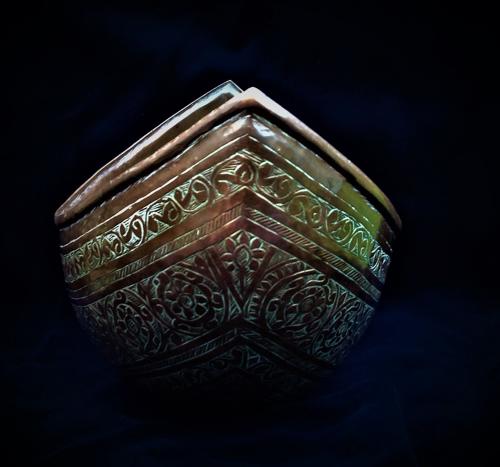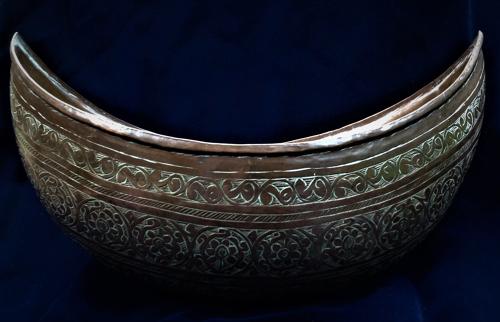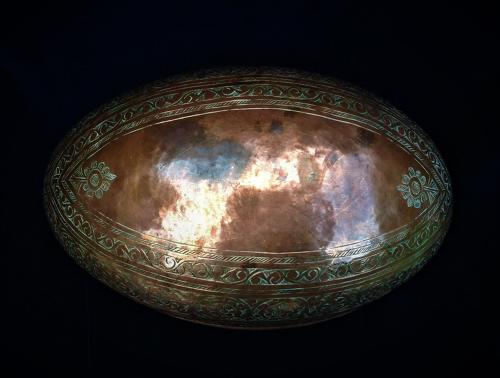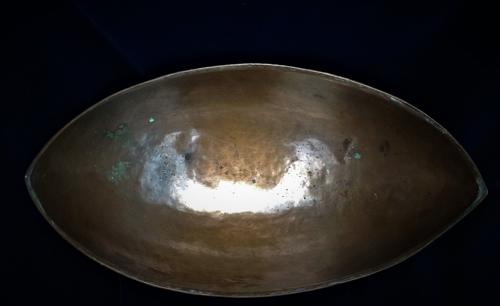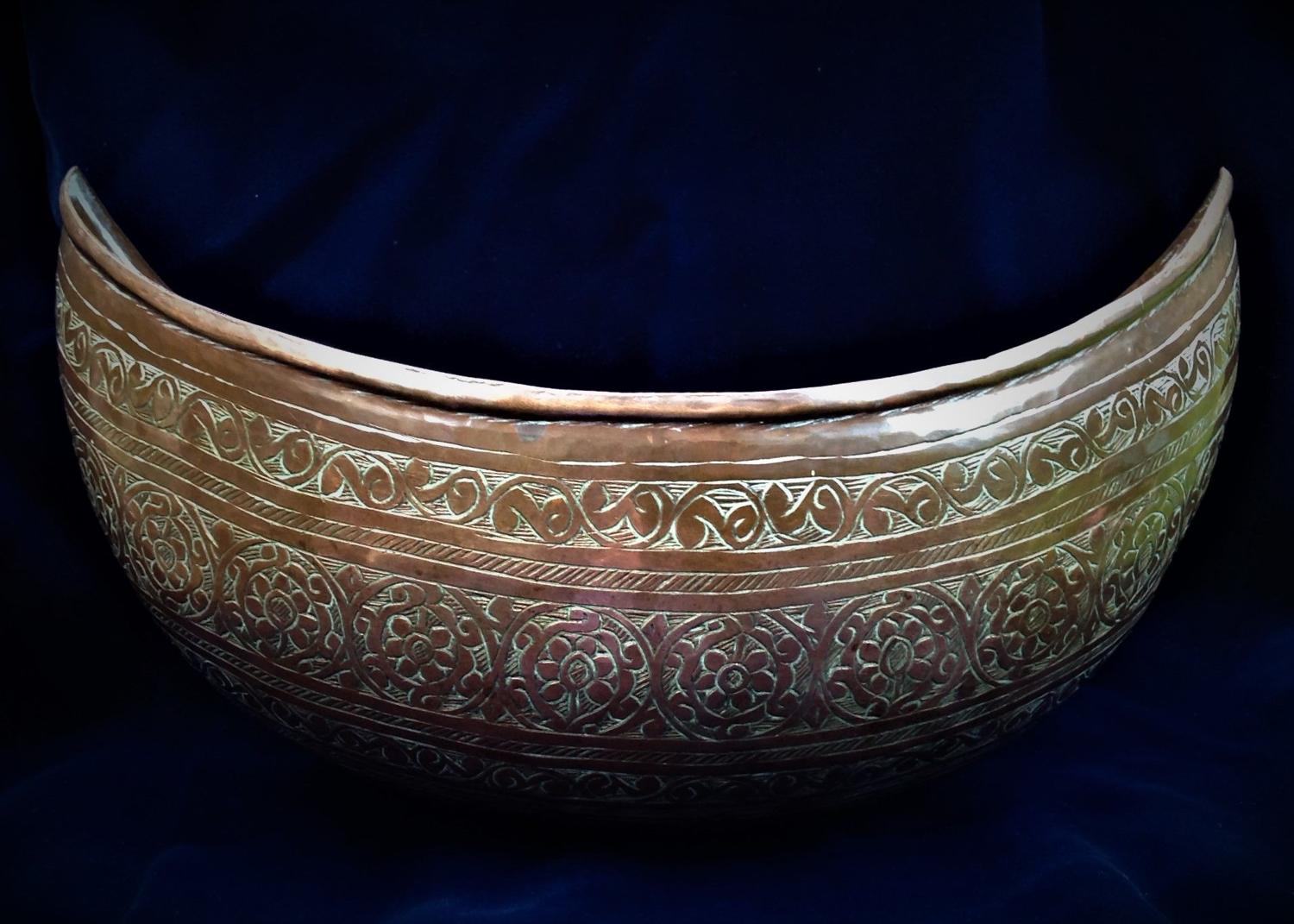
Code: 10143
Dimensions:
Indo Persian Copper 'Kashkul' ("Beggar's Bowl")
Hand beaten copper with geometric floral engraving
Probably 19th Century
Measures:-
25.9 cm long x 15.6 cm wide
Provenance:-
Private collection UK
The Kashkul (or "Beggar’s Bowl") was carried by certain Sufi dervishes and wandering ascetics as a sign of their religious poverty and renunciation of wordly goods. Relying on the kindness of others, the donations they depended on were placed in these types of bowl.
Made in a variety of media, some were fashioned from the coco de mer which drifted across the Indian Ocean from their native habitat on the Seychelles and washed up on beaches. These had a spiritual significance as a metaphor for the ascetics journey on the ocean of knowledge. With similar symbolism, other kashkuls. made from ceramics or metal, took a distinctive crescent or boat shape form, as here. This form may also have derived from similarly shaped pre-Islamic Persian bowls known as "wine ships". (Some even have a ‘prow’ and 'stern' affixed to them).
This kashkul has been skillfully worked into an especially attractive form and is of a good size. The tips of the ends have not been pierced (as is often the case) indicating that the example here was not suspended from a strap or chain.
For a Kashkul of similar form but fitted with two hinged rings holding a chain, described as "travail Indo-Persan", see Lot 23, Artcurial, Champs-Élysées, Paris, Vente Arts d'Orient - 17 décembre 2015
